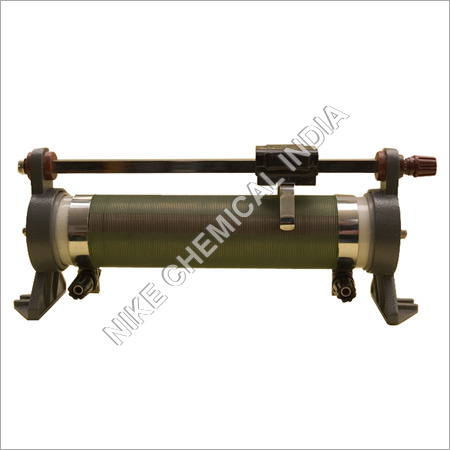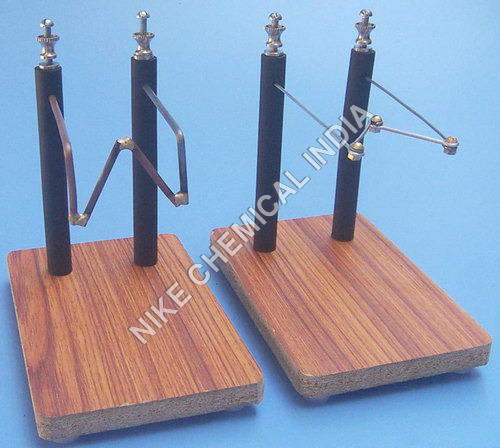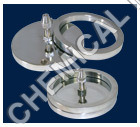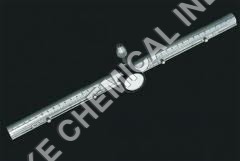- Home Page
- Company Profile
-
Our Products
- Laboratory Chemical
- Ammonium Compounds
- Aluminium Compounds
- Barium Compounds
- Copper Compounds
- Lead compounds
- Magnesium Compounds
- Potassium Compounds
- Sodium Compounds
- Zinc Compounds
- Chemical Packaging
- General Chemical
- Laboratory Solvents
- Laboratory Stains & Indicators
- Water treatment Chemical
- Laboratory Centrifuge
- Laboratory Glasswares
- Laboratory Plasticwares
- Microscope
- Biology
- Chemistry Lab Equipments
- Physics Lab Instruments
- NEWTONS COLOR DISC
- Wire Wound Rheostats
- Slotted Weight
- PLUG TYPE RESISTANCE BOX
- Lab Post Office Box
- Micrometer Screw Gauge
- Vernier Caliper
- COMPOUND PENDULUM
- KATERS REVERSIBLE PENDULUM
- MAXWELL NEEDLE
- Conductivity Apparatus Lees and Charltons
- Laboratory Flywheel
- TORSION PENDULUM
- Poiseuilles Viscosity Apparatus
- Viscosity Apparatus Stokes Method
- U-Tube Manometer
- Stefans Radiation Constant Apparatus
- Resistance Box
- Continuous Flow Calorimeter
- Copper Constantan Thermocouple
- Jaggers Surface Tension Apparatus
- WAVE MOTION APPARATUS
- LINEAR EXPANSION APPARATUS
- Laboratory Inclined Plane
- Laboratory Sonometer
- Laboratory Meter Bridge
- Linear Potentiometer
- Clement and Desormes Apparatus
- Physics Lab Electric Bell
- Reversing Key
- Morse Key
- Function Generator
- Wheel and Axle
- P N JUNCTION DIODE
- Steam Generator
- Joules Calorimeter
- COPPER WATER BATH
- Drawing Board
- Oven & Incubator
- Water Bath
- Laboratory Testing Instruments
- Contact Us
Wire Wound Rheostats
MOQ : 1000 Pieces
Wire Wound Rheostats Specification
- Shape
- Cylindrical
- Accuracy
- High Adjustment Precision
- Control Type
- Rotary Adjustable
- Power Supply
- AC/DC as required
- Features
- Durable, High Power Handling, Smooth Resistance Adjustment
- Temperature Resistance
- High Temperature Resistant
- Type
- Wire Wound Rheostat
- Dimension (L*W*H)
- Standard/Custom sizes available
- Equipment Type
- Rheostat
- Equipment Materials
- Ceramic, Nickel Chromium Wire, Metal Fittings
- Power
- Variable (Depending on Model, typically 10W to 500W)
- Voltage
- Up to 500V or as specified
- Material
- Ceramic Tube Wirewound
- Application
- Laboratory
- Warranty
- No
Wire Wound Rheostats Trade Information
- Minimum Order Quantity
- 1000 Pieces
- Payment Terms
- Letter of Credit (L/C), Letter of Credit at Sight (Sight L/C), Telegraphic Transfer (T/T)
- Supply Ability
- 1000 Pieces Per Month
- Delivery Time
- 7 Days
- Sample Available
- Yes
- Sample Policy
- Sample costs shipping and taxes has to be paid by the buyer
- Main Domestic Market
- All India
About Wire Wound Rheostats
Among the reliable manufacturers, exporters and suppliers of scientific apparatus, our firm is betrothed to offer Wire Wound Rheostats. The provided rheostats are primarily used for increasing or decreasing the resistance when used in any circuit for changing the amount of current. These rheostats are manufactured in conformance with international quality standards using pristine quality conductive materials under the stern guidance of our ingenious professionals. Furthermore, clients can purchase these Wire Wound Rheostats from us in several designs and technical specifications at market leading prices.
Features:
-
Compact, portable and durable design
-
Suitable for schools, colleges and laboratory use
-
Easy to operate and rewind
-
Smooth sliding of knob over the pivoted base
High Durability, High Precision
Built with a ceramic tube and nickel-chromium wire, these rheostats offer superior durability and heat resistance, making them suitable for demanding environments. Precision adjustment mechanisms allow for smooth, reliable control of resistance, ensuring consistent performance for experimental or operational use.
Flexible Mounting & Customization
Available in both panel and bracket mount versions, our wire wound rheostats can be easily incorporated into a variety of setups. Standard and custom size options ensure seamless integration with laboratory equipment or industrial machines, meeting diverse application needs.
Certified Safety & Quality
Manufactured according to ROHS and ISO standards, these rheostats deliver safe, high-quality performance with corrosion-resistant finishes and high-grade ceramic insulation. Their robust construction guarantees dependable operation under various environmental conditions.
FAQs of Wire Wound Rheostats:
Q: How do I install a wire wound rheostat with panel or bracket mount?
A: To install, choose a suitable mounting location on your panel or bracket, secure the rheostat using appropriate hardware, and connect the terminals to your circuit as specified. Installation is straightforward and compatible with both standard and custom equipment setups.Q: What are the primary applications of these rheostats in laboratory environments?
A: Wire wound rheostats are commonly used for adjusting current, simulating load conditions, and controlling voltage in laboratory experiments. Their high precision and durability make them ideal for testing, educational demonstrations, and controlled variable resistance tasks.Q: When should I opt for a rotary knob versus a sliding contact?
A: A rotary knob allows for smooth, continuous resistance adjustment, suitable for frequent or fine-tuned changes. Sliding contacts offer quick and visible changes in resistance, making them ideal for applications requiring rapid or coarse adjustment.Q: What materials ensure the longevity and performance of these rheostats?
A: The combination of high-grade ceramic insulation, nickel-chromium wire, and copper alloy contacts guarantees excellent heat resistance, mechanical strength, and long operational life. These features allow the rheostat to handle high power and resist corrosive conditions effectively.Q: Where can I find variable power and voltage options for my setup?
A: Our rheostats are available in power ratings from 10W to 500W and support voltages up to 500V. Custom voltage and power configurations can be requested to suit specific laboratory or industrial applications.Q: What benefits does high-precision adjustment provide?
A: High-precision adjustment allows for accurate control of current and resistance, minimizing experimental errors and enabling reproducible results in sensitive laboratory setups or automated systems.
Tell us about your requirement

Price:
Quantity
Select Unit
- 50
- 100
- 200
- 250
- 500
- 1000+
Additional detail
Mobile number
Email
More Products in Physics Lab Instruments Category
Copper Constantan Thermocouple
Minimum Order Quantity : 1000 Pieces
Warranty : No
Material : Wood & Metal
Application : Laboratory
Type : Other, Copper Constantan Thermocouple
Equipment Materials : Copper, Constantan
TORSION PENDULUM
Minimum Order Quantity : 1000 Pieces
Warranty : No
Material : Metal
Application : Laboratory
Type : Other, Torsion Pendulum
Equipment Materials : Mild Steel Frame with Polished Metal Fittings
Micrometer Screw Gauge
Minimum Order Quantity : 1000 Pieces
Warranty : No
Material : Metal
Application : Industrial, Laboratory
Type : Other, Micrometer Screw Gauge
Equipment Materials : Metal
MAXWELL NEEDLE
Minimum Order Quantity : 1000 Pieces
Warranty : No
Material : Metal
Application : Laboratory
Type : Other, MAXWELL NEEDLE
Equipment Materials : Metal

 Send Inquiry
Send Inquiry





